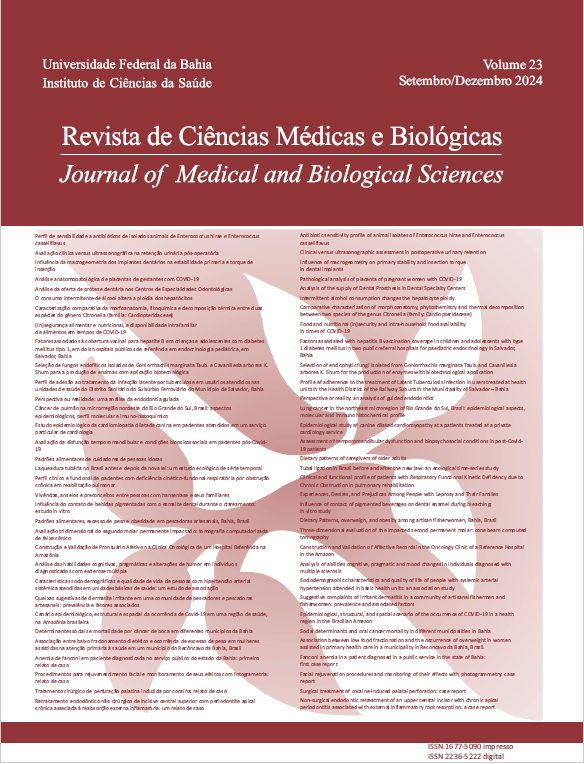Epidemiological study of canine dilated cardiomyopathy in patients treated at a private cardiology service.
DOI:
https://doi.org/10.9771/cmbio.v23i3.59108Keywords:
heart, systolic dysfunction, echodopplercardiogram, retrospective studyAbstract
Dilated cardiomyopathy (DCM) is the second most important heart disease in the clinic of small children and has a chronic, progressive nature and clinical signs of significant impact. Clinical signs usually appear at an advanced stage, leading to a reserved prognosis, as the disease is often diagnosed late. Its etiology can be idiopathic, metabolic, toxic, infectious, nutritional and genetic, with a higher incidence in large to giant male dogs. DCM is characterized by ventricular dilation causing a decrease in inotropism and consequent congestive heart failure. The present study analyzed the number of dogs that have DCM with a diagnosis confirmed by Doppler echocardiography, in addition to a murmur on cardiac auscultation, found on clinical examination and the presence of cardiac remodeling on chest X-ray. Therefore, the objective of this work is to detect, through these parameters, the intensification of clinical signs correlated to data found in echocardiographic exams and complementary exams of 52 dogs attended at a private cardiology service. There was a predominance of adult, male and large dogs, all presenting a murmur, correlating with reduced blood pressure. Sinus tachycardia, premature ventricular complex and sinus rhythm were the most frequent rhythms. In laboratory findings, thrombocytosis, increase in alkaline phosphatase, alanine aminotransferase, aspartate aminotransferase, triglycerides, total cholesterol and urea reduction were observed. The most relevant signs were cyanosis, tiredness and ascites. The most prevalent echocardiographic findings were: remodeling of left and right ventricular chambers, mild degeneration of mitral and tricuspid valves, E/A wave inversion and systolic dysfunction.
Downloads
Downloads
Published
How to Cite
Issue
Section
License
Copyright (c) 2024 Journal of Medical and Biological Sciences

This work is licensed under a Creative Commons Attribution 4.0 International License.
The Journal of Medical and Biological Sciences reserves all copyrights of published works, including translations, allowing, however, their subsequent reproduction as transcription, with proper citation of source, through the Creative Commons license. The periodical has free and free access.


